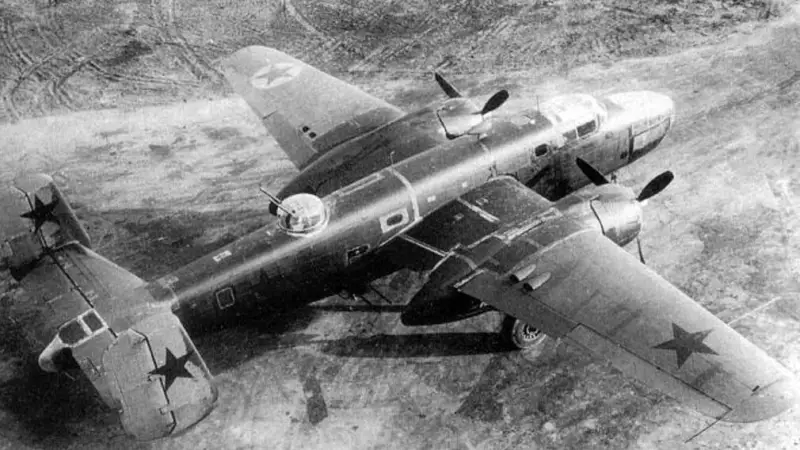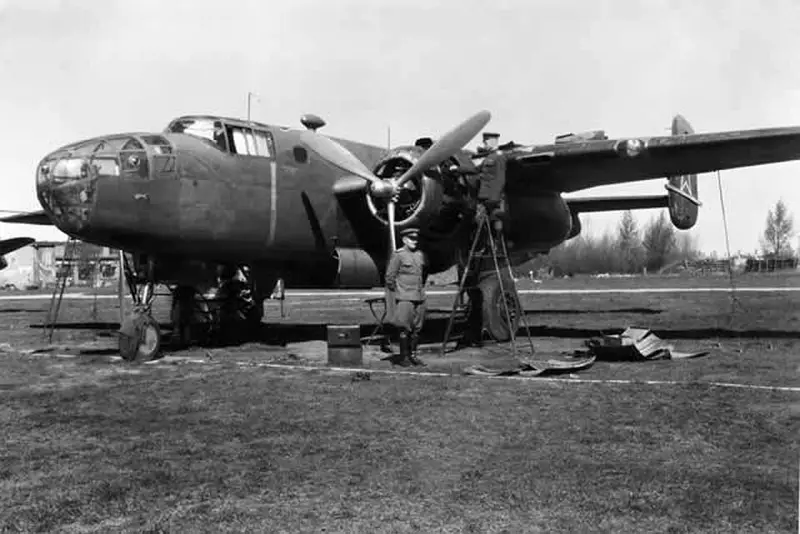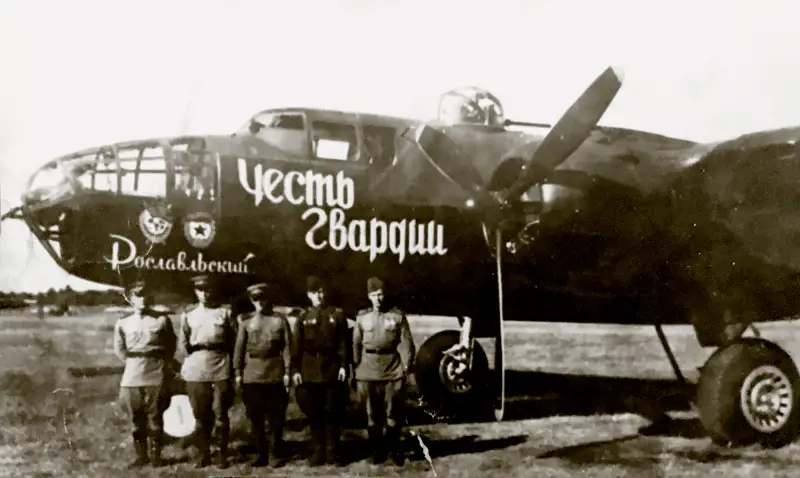The Soviet pilot spoke about the peculiarities of the use of American B-25 bombers during the Second World War

A Soviet pilot who fought on an American B-25 bomber during the Great Patriotic War recalls that after training he received the specialty of a gunner-bomber. He became acquainted with the B-25 aircraft after arriving in the combat regiment. By that time, he had a relatively small flight time of 60 - 80 hours.
After arriving at the combat unit, the pilots had to pass additional exams on materiel, then there were flights in a circle and into the zone, after which the newly trained combat pilots were cleared for combat work. The squadron had only nine combat aircraft, and there were no spare aircraft. The pilot generally assesses the pilot training completed before arriving at the combat regiment as quite sufficient, even taking into account frequent night flights under enemy air defense fire.

According to the pilot, the engines and flight equipment of the B-25 were somewhat better than those in Soviet aircraft of that time. Even under conditions of active operation, the engines practically did not fail. Soviet pilots, despite the relatively high flight speed of the B-25, experienced virtually no difficulties in controlling these aircraft.
During the Great Patriotic War, the main Soviet long-range bomber was the Il-4, which was inferior to the American B-25 in a number of characteristics. Firstly, the B-25 was supposed to have two pilots, and secondly, the American car was more comfortable to fly. However, American bombing sights were practically not used, since they reduced the maneuverability of the bomber in the area of enemy air defense. In addition to sights, B-25 bombers were also equipped with Soviet electric bomb releasers, which were better than American ones in a number of characteristics.

The main disadvantages of the B-25 were its lower altitude ceiling and flight range than the Il-4, which reduced its range. Subsequently, a scheme was developed that reduced fuel consumption at cruising speed, which increased the range of American bombers.
Information